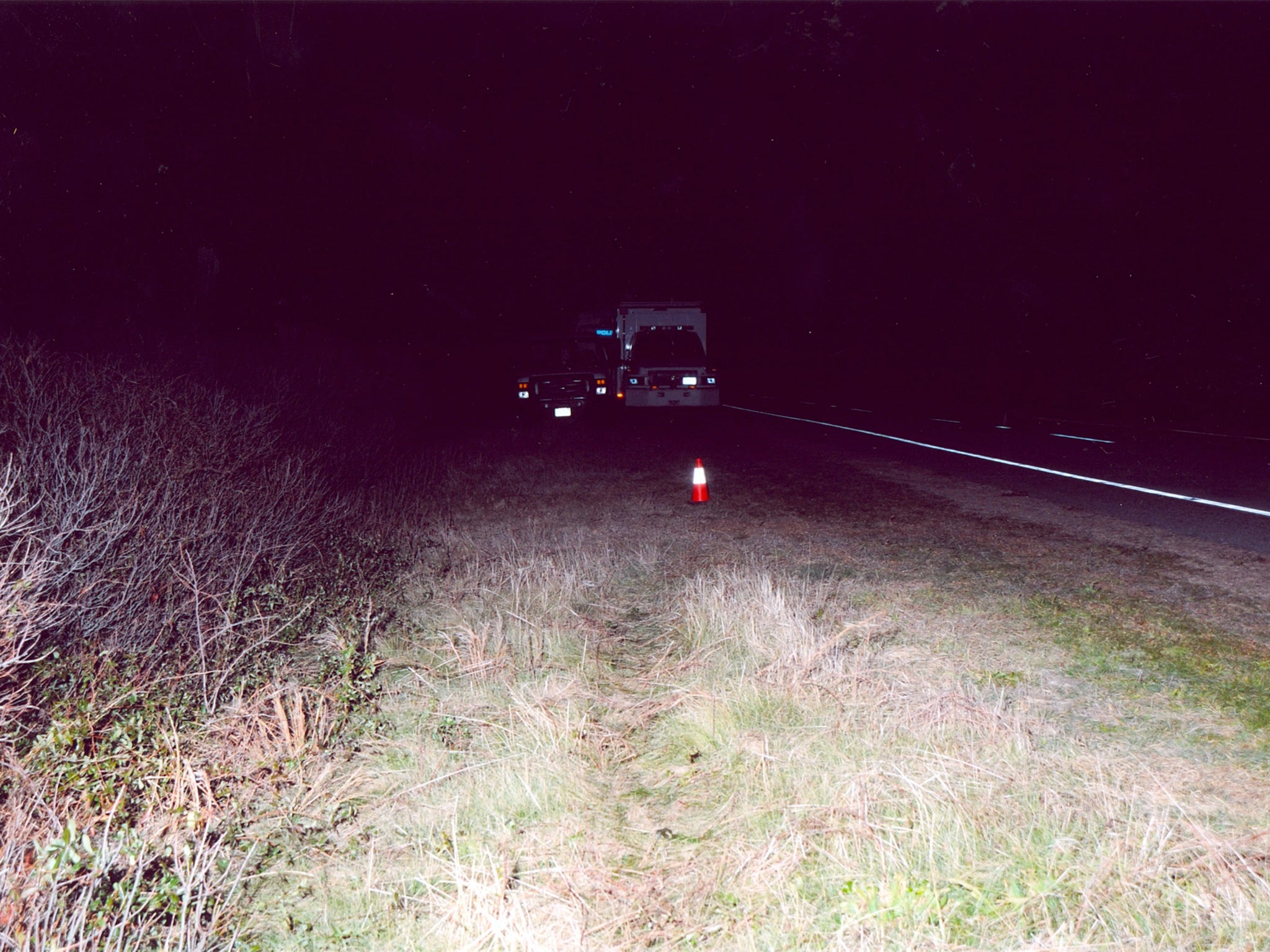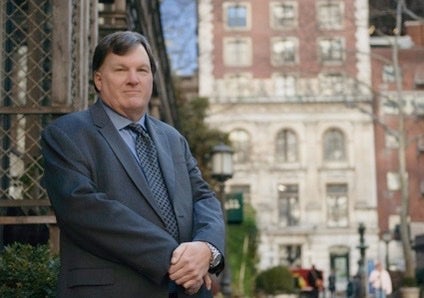Horror on the shore: the murder spree that has gripped America
The Gilgo Beach serial killer case has shocked and captivated America for the past 13 years, writes Rachel Sharp. The suspect was hiding in plain sight all along


Back in 2010, very few people knew the name Gilgo Beach.
The small beach in Long Island didn’t have the same draw for New York day-trippers or staycationers as the shores along other oceanfront towns like Montauk or East Hampton.
And for anyone outside of New York state, they’d likely never even heard of it.
That all changed one night in May when a terrified woman called 911 begging for help to save her from someone she believed was trying to kill her.
A search of the area for the missing woman followed – and what it uncovered was something that placed Gilgo Beach on the map forever.
Over the coming months, body after body was discovered along the remote shoreland.
In total, the remains of 11 victims were found, most of them young women who had disappeared while working as escorts.
Suffolk County police confirmed the worst: a serial killer or serial killers was at large.
From that day on, the whole of America knew the name Gilgo Beach.

It’s a case that has continued to grip the nation for the past 13 years while no arrests were made and no suspects were formally named.
Like all notorious cases, the unknown predator quickly gained his own moniker as the Gilgo Beach serial killer or the Long Island serial killer (LISK for short).
Unsuspecting individuals found themselves under a cloud of suspicion – including, most shockingly, the police chief at the helm of the investigation who was later jailed for corruption.
Podcasts were made about the case and books were written; there was even a 2020 Netflix movie Lost Girls.
While the years rumbled on and the case appeared to go cold, this fascination with it did not.
Coltan Scrivner, a research scientist at Recreational Fear Lab and an expert in morbid curiosity, says that the longer a killer remains at large, the more fascinated the public may become.
“The police seemed to believe there was a single person or a group of people behind at least a number of these murders – and so what that signals to the public is that there is someone out there who is not only able to do this but is able to continue to evade capture while they do it,” he tells The Independent.
“It makes it more frightening. If you have someone who is caught after one or two kills, people feel more assured about the police’s ability to catch a killer.
“But when someone evades capture for more than 10 years it sparks questions in the public mind as to what it is about this person that makes them able to evade capture and continue to do these terrible things.”

This morbid fascination has exploded even more following an unexpected breakthrough in the case last week, when a 59-year-old man was arrested for the murders of three of the victims.
Rex Heuermann, a married father-of-two and the president of his own architecture firm, left his office in Midtown Manhattan and found himself surrounded by a swarm of plainclothes police officers.
On 14 July, the suspect appeared in court and was charged with the murders of Melissa Barthelemy, Megan Waterman and Amber Costello.
The three women went missing between July 2009 and September 2010 after going to meet escort clients.
Heuermann is also the prime suspect in the murder of a fourth woman, Maureen Brainard-Barnes, who disappeared in 2007 – with Suffolk County officials saying they are “confident” they’ll soon be able to charge him with her death.
By all accounts, there is nothing remarkable about Rex Heuermann – there is nothing that stands out in his public life to hint that he could be a serial killer behind closed doors.
He was born and raised in Massapequa Park, Long Island – a stone’s throw from the shores of Gilgo Beach, which he allegedly chose to use as his victims’ graveyard.
He went to the local schools, where his classmates included actor Billy Baldwin, and has lived his whole life in the same nondescript, red-painted one-storey home in the quiet neighbourhood that he grew up in.
After leaving school, he trained to be an architect – and launched his own architecture firm in Manhattan in 1994.

He met and married wife Asa Ellerup (after a brief first marriage when he was young) and, over more than two decades, they raised two children together – a daughter who works with him at his business and a stepson through marriage.
But beneath this regular, average existence, police say he was leading a double life.
On at least three occasions when his wife had gone out of town on trips, he arranged to meet escorts and then murdered them, according to investigators.
He allegedly bound the victims’ bodies with belts or tape and wrapped them in a burlap-type material before dumping them to never be found.
Chillingly, he then allegedly kept the victims’ cellphones at least twice and, in a cruel twist, called Barthelemy’s loved ones and goaded them about how he had killed and sexually assaulted the young woman. Police say he made these calls around his Midtown Manhattan office where his business clients included JFK Airport and the Trump Organization.
That outward mundanity drastically differs from the portrait painted by officials of a man obsessed with his own crimes.
Over the last year, Heuermann carried out more than 200 internet searches about the Gilgo Beach serial killer, and also looked up images of the victims and – horrifyingly – was even trying to track down the whereabouts of some of their’ relatives.
His online history also revealed searches for graphic images of young girls and children and “sadistic, torture-related pornography”, court documents show.
The fact that a wanted serial killer can be “hiding in plain sight”, holding down a professional job and living what appears – from the outside – to be a normal family life is something that makes this case particularly shocking and captivating, says Mr Scrivner.
“He seemed fairly normal by all accounts. Which can be shocking as people think he doesn’t have anything to signal that he is a serial killer,” he says.

“There’s an element of: Who else might be doing this out there and hiding in plain sight?”
He adds: “Him having a family is one thing that people likely find intriguing, as there are people who are very close to this person who presumably didn’t see what was happening. He has a wife and kids – his daughter works for him at the same company – and he’s even fooling them.
“It’s intriguing that a person is really able to hide their true nature.”
The suspected killer was given a helping hand in hiding his crimes by law enforcement officials who bungled the investigation for years.
James Burke, the Suffolk County Police Chief from 2011 to 2015, blocked the FBI from the investigation and was later jailed for corruption after he beat up a man who stole porn and sex toys from his patrol car. Due to allegations that he often frequented sex workers in the area where the victims were found, his predecessors were later forced to deny the suggestion that he might actually be involved in some of the killings.
Then, in spring 2022, newly-appointed Police Commissioner Rodney Harrison came on board and launched a new task force to solve the case once and for all.
Around 18 months later, he appeared to fulfil that promise.
A break came just two months after the taskforce was launched when a tip from a witness pointed police in the direction of a Chevrolet Avalanche.
Costello was last seen alive going to meet a client driving a vehicle of that description, court documents revealed.
Quickly after that tip came in, Heuermann was on their radar.
Investigators then honed in on him through a cellphone pattern which the killer seemed to follow.
Barthelemy, Waterman and Costello had all been contacted by a person using a new burner phone prior to their deaths. After each victim disappeared, the killer allegedly switched phones.
These burner phones all pinged off cell towers close to two specific locations: Mr Heuermann’s office in Midtown Manhattan and his family home in Massapequa Park.
Cellphone records also found that the phones were in the same general location at the same time as another cellphone – the personal phone registered to Mr Heuermann.
His DNA was also a match to that left behind by the killer on one of the victims – identified with the help of a discarded pizza crust. DNA testing also revealed that hairs found on some of the victims’ bodies belonged to his wife.
Heuermann’s wife and adult children were out of town at the time of the three murders with which her husband has been charged. She filed for divorce from him this week just six days after his bombshell arrest.

Yet, the case is far from over.
It’s now expanding far beyond the once little-known shores of Gilgo Beach as investigators all across America explore the possibility that the accused serial killer struck further afield.
After it emerged that Heuermann has properties in both Las Vegas and South Carolina, Las Vegas Metropolitan Police are looking into cold case murders and missing persons cases for possible connections in Nevada. South Carolina authorities are gathering evidence at the request of New York officials.
Meanwhile, back on the remote shores of Gilgo Beach, much still remains a mystery.
While Heuermann is charged with the murders of three women and may soon be charged with a fourth, there are still seven victims still waiting for justice.
No arrests have been made over the murder of Jessica Taylor, who vanished one day in Manhattan in 2003.
Or for the murder of Valerie Mack, who was last seen alive in Philadelphia in 2000.
The family of Shannan Gilbert – the woman whose desperate 911 call led police to discover the Gilgo Beach graveyard – are still pushing police to categorise her death as a murder at all.
And the unidentified victims – two young women, an Asian male and a two-year-old girl – still don’t even have names.






Join our commenting forum
Join thought-provoking conversations, follow other Independent readers and see their replies
Comments